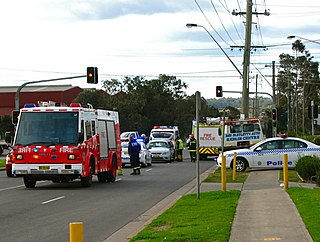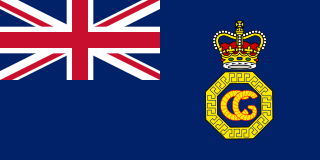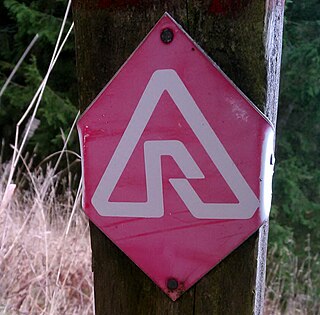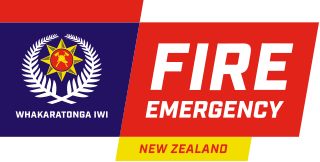
Emergency services and rescue services are organizations that ensure public safety, security, and health by addressing and resolving different emergencies. Some of these agencies exist solely for addressing certain types of emergencies, while others deal with ad hoc emergencies as part of their normal responsibilities. Many of these agencies engage in community awareness and prevention programs to help the public avoid, detect, and report emergencies effectively. Emergency services are often considered first responders, and typically have dedicated emergency vehicles.

Search and rescue (SAR) is the search for and provision of aid to people who are in distress or imminent danger. The general field of search and rescue includes many specialty sub-fields, typically determined by the type of terrain the search is conducted over. These include mountain rescue; ground search and rescue, including the use of search and rescue dogs ; urban search and rescue in cities; combat search and rescue on the battlefield and air-sea rescue over water.

His Majesty's Coastguard (HMCG) is the section of the Maritime and Coastguard Agency responsible, through the Secretary of State for Transport to Parliament, for the initiation and co-ordination of all maritime search and rescue (SAR) within the UK Maritime Search and Rescue Region. This includes the mobilisation, organisation and tasking of adequate resources to respond to persons either in distress at sea, or to persons at risk of injury or death on the cliffs or shoreline of the United Kingdom. Since 2015 it has also been responsible for land-based search and rescue helicopter operations.

The Swedish Rescue Services Agency (SRSA) was the central supervisory government agency for the rescue services in Sweden until 2008, after which it merged into the newly formed Swedish Civil Contingencies Agency on 1 January 2009. It promoted emergency management practice that improved disaster prevention and response, and in the event of an incident/accident limited injury and damage. This was achieved among other ways by conveying information, by running training courses and holding exercises, and through supervision.

The Incident Command System (ICS) is a standardized approach to the command, control, and coordination of emergency response providing a common hierarchy within which responders from multiple agencies can be effective.

Emergency management is a science and a system charged with creating the framework within which communities reduce vulnerability to hazards and cope with disasters. Emergency management, despite its name, does not actually focus on the management of emergencies; emergency management or disaster management can be understood as minor events with limited impacts and are managed through the day-to-day functions of a community. Instead, emergency management focuses on the management of disasters, which are events that produce more impacts than a community can handle on its own. The management of disasters tends to require some combination of activity from individuals and households, organizations, local, and/or higher levels of government. Although many different terminologies exist globally, the activities of emergency management can be generally categorized into preparedness, response, mitigation, and recovery, although other terms such as disaster risk reduction and prevention are also common. The outcome of emergency management is to prevent disasters and where this is not possible, to reduce their harmful impacts.
The National Incident Management System (NIMS) is a standardized approach to incident management developed by the United States Department of Homeland Security. The program was established in March 2004, in response to Homeland Security Presidential Directive-5, issued by President George W. Bush. It is intended to facilitate coordination between all responders. The system has been revised once, in December 2008. NIMS is the common framework that integrates a wide range of capabilities to help achieve objectives.

A command center is any place that is used to provide centralized command for some purpose.

An emergency operations center (EOC) is a central command and control "coordination structure" responsible for managing emergency response, emergency preparedness, emergency management, and disaster management functions at a strategic level during an emergency. Based on the organizational needs of the entity that has implemented the EOC, as well as the emergency being dealt with, the specific responsibilities and tasks executed by a given EOC may vary vastly and could include ensuring the continued operation of a municipality, company, public or emergency service, or other organization.
The New Zealand Fire Service was New Zealand's main firefighting body from 1 April 1976 until 1 July 2017 – at which point it was dissolved and incorporated into the new Fire and Emergency New Zealand.
The Australian Intelligence Community (AIC) and the National Intelligence Community (NIC) or National Security Community of the Australian Government are the collectives of statutory intelligence agencies, policy departments, and other government agencies concerned with protecting and advancing the national security and national interests of the Commonwealth of Australia. The intelligence and security agencies of the Australian Government have evolved since the Second World War and the Cold War and saw transformation and expansion during the Global War on Terrorism with military deployments in Afghanistan, Iraq and against ISIS in Syria. Key international and national security issues for the Australian Intelligence Community include terrorism and violent extremism, cybersecurity, transnational crime, the rise of China, and Pacific regional security.
An incident is an event that could lead to loss of, or disruption to, an organization's operations, services or functions. Incident management (IcM) is a term describing the activities of an organization to identify, analyze, and correct hazards to prevent a future re-occurrence. These incidents within a structured organization are normally dealt with by either an incident response team (IRT), an incident management team (IMT), or Incident Command System (ICS). Without effective incident management, an incident can disrupt business operations, information security, IT systems, employees, customers, or other vital business functions.
The Ministry of Emergency Management and Climate Readiness (EMCR), formerly Emergency Management BC (EMBC), is a provincial government department in the Canadian province of British Columbia. EMCR works with local governments and other provincial and federal agencies year round, providing coordination and support before, during and after emergencies. EMCR is administered under the B.C. Emergency and Disaster Management Act.
In Australia, the Australasian Inter-Service Incident Management System (AIIMS) is the nationally recognised system of incident management for the nation's fire and emergency service agencies. Organisational principles and structure are used to manage bushfires and other large emergencies utilising the all agencies approach. AIIMS was first developed by the Forests Commission Victoria (FCV) in wake of the Ash Wednesday Bushfires in 1983 as a derivative of the United States’ NIMS, and is based on the principles of management by objectives, functional management, common terminology and limits to the span of control. AIIMS is a trademark of AFAC and the material in the AIIMS manual and training materials is copyright of AFAC.
In the United States, the hospital incident command system (HICS) is an incident command system (ICS) designed for hospitals and intended for use in both emergency and non-emergency situations. It provides hospitals of all sizes with tools needed to advance their emergency preparedness and response capability—both individually and as members of the broader response community.
The Dutchess County Department Of Emergency Response has the responsibility of governing Emergency operations in Dutchess County, New York. This encompasses Police, Fire and EMS.

The Joint Rescue Coordination Centre Halifax is a rescue coordination centre operated by the Royal Canadian Air Force (RCAF) and the Canadian Coast Guard (CCG).
Emergency management software is the software used by local, state and federal emergency management personnel to deal with a wide range of disasters and can take many forms. For example, training software such as simulators are often used to help prepare first responders, word processors can keep form templates handy for printing and analytical software can be used to perform post-hoc examinations of the data captured during an incident. All of these systems are interrelated, as the results of an after-incident analysis can then be used to program training software to better prepare for a similar situation in the future. Crisis Information Management Software (CIMS) is the software found in emergency management operation centers (EOC) that supports the management of crisis information and the corresponding response by public safety agencies.
The Joint Rescue Coordination Centre Trenton is a rescue coordination centre operated by the Royal Canadian Air Force (RCAF) and the Canadian Coast Guard (CCG). It is located on CFB Trenton in Astra, Ontario near Quinte West.

Fire and Emergency New Zealand is New Zealand's main firefighting and emergency services body.









